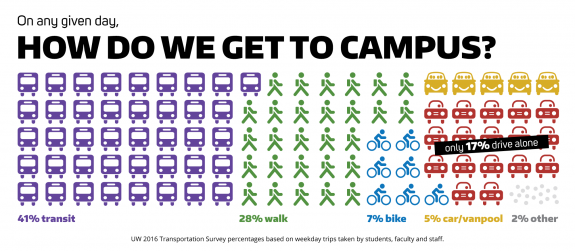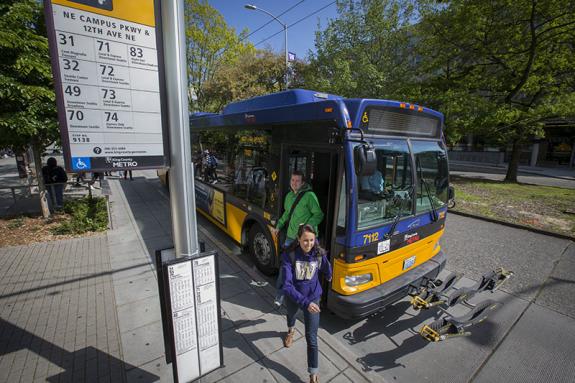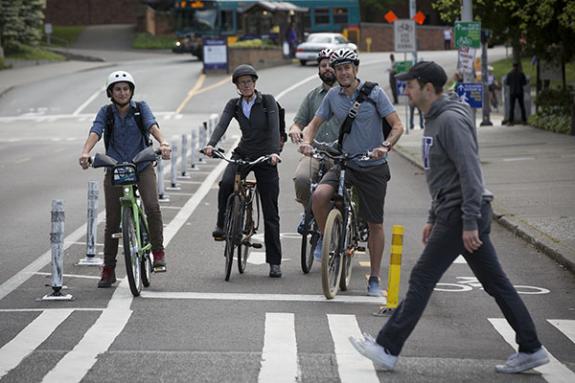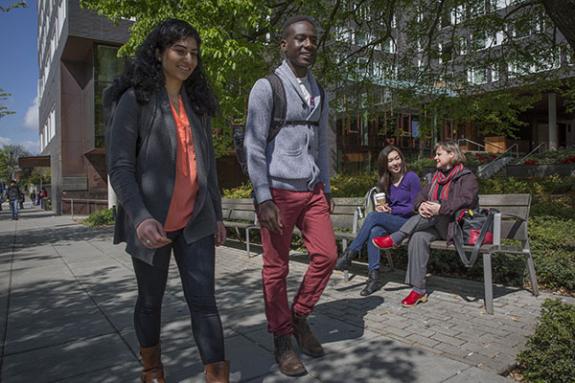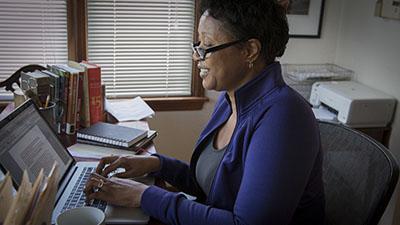2016 UW Commuter Survey

The UW campus commute
The UW campus commute
How do University of Washington faculty, staff and students get to campus each day? Answers to this question are in the newly-published Campus Transportation Survey. The survey is conducted annually by Transportation Services, a division of Facilities Services. The 2016 results are especially encouraging in light of the University’s continued growth.
Through award-winning programs such as U-PASS, Transportation Services helps to connect the campus community to affordable, safe, and accessible transportation options with an emphasis on reducing the number of vehicle trips to campus. Transportation Services is pleased to report that the overall campus drive-alone rate has dropped to 17.3% for 2016—the lowest rate in 26 years.
“This is the best news in commute reduction since the U-PASS program and survey began,” said Director of Transportation Services Anne Eskridge. “Our partnerships with transit agencies makes this possible.”
Until 2014 the survey was a joint effort between the University and King County Metro. In 2016, UW partnered with Northwest Research Group, a Seattle-based research consultancy that specializes in transportation-related survey design and data collection. “The survey has proven invaluable over the years. What started as an operations project now serves as a campus-wide instrument that allows us to more fully understand our customers,” said Commute Options & Planning Manager Zack Howard.
“Because of the metrics, we can strategically meet customers’ needs based on facts and data, versus what we might think is best,” said Eskridge.
The Seattle Times routinely identifies transportation issues as a major concern for the city of Seattle. The same holds true for UW. Of the 62,000 people on campus every day, an estimated 25,000 use mass transit to travel to the University District, which is Metro’s second most popular destination after downtown.
Despite a campus population growth of 1.3% since 2015, drive-alone trips are down 2.1%. “To accommodate a growing campus, we must do better and better every year,” said Howard. “We need to get increasingly more people aware of and using the current transit options and those coming down the road.”
Light rail encourages a significant commute shift
Light rail encourages a significant commute shift
The 2016 survey was the first to capture Link light rail ridership. “We anticipated that ridership might multiply by four; instead it multiplied by approximately nine. It’s an impressive shift,” said Howard.
Faculty, which includes medical residents and fellows within the UW Medical Center, demonstrated the most dramatic shift. The survey found that their drive-alone trips were reduced from 45% in 2015 to 32% in 2016. At the same time, their transit trips increased from 24% to 35%. Link’s University of Washington Station opened just steps away from UWMC. “A lot of individuals suddenly had access to an easier commute,” said Howard.
“More faculty and staff are using their U-PASS, and taking more transit trips." Light rail increases people’s willingness to use mass transit. We’ll see it again in 4 years,” said Howard, referring to the anticipated U District Station opening near UW Tower.
U-PASS value
U-PASS value
80% of UW’s employees indicate that the U-PASS is a valuable benefit. U-PASS members save roughly 50% off the retail cost of transit fares. “That doesn’t factor in the positive environmental impacts,” added Eskridge. “By taking mass transit, commuters lower their carbon footprint by reducing fossil fuel consumption.”
Student and employee engagement
Student and employee engagement
The campus is engaged and aware of transportation issues. The Universal Student U-PASS Advisory Board has provided governance and oversight for U-PASS program operations since the board’s founding in 2011. “U-PASS and transit opportunities empower students to be part of the public process,” said Howard. “We think transportation is opening doors and allowing students access to all kinds of activities and opportunities,” said Eskridge.
And not just students. “Faculty and staff are engaging in meaningful conversations about transportation issues in the region,” said Eskridge. “The University Transportation Committee, which has a broad faculty and staff representation, has been asking outstanding questions. Transportation issues are at the forefront of peoples’ minds in the Puget Sound region.”
“We strive to provide fantastic transit options, and emphasize the region’s great walking and biking environment. The survey numbers show it’s working,” said Howard.
Changing behaviors
Changing behaviors
“We’re forming lifelong transit-taking habits. Today’s students are going to want to live near convenient transit in the future; they’re going to demand the high quality service they’re experiencing now,” said Howard.
This positive habit-forming fosters support for all sustainability efforts. "Initiatives that reduce driving to and from campus directly support the University’s Climate Action Plan goals,” said Director of UW Sustainability Claudia Frere-Anderson. “We appreciate the hard work TS does to connect with the campus community and encourage travel with a minimal environmental impact."
Walking continues to be the primary transit mode for students. “We’re glad the U District and the University offer housing options that allow for that,” continued Eskridge.
An evolving workplace
An evolving workplace
Telecommuting was another feature added to the 2016 survey. “TS is finding ways to meet our agreements with our neighbors and the city of Seattle to keep the traffic impacts as low as possible,” said Howard. Technological advancements now offer the option of eliminating a trip altogether. “Talk about zero footprint!” said Eskridge.
Data from the survey indicates that thousands of daily trips were avoided due to telework. In 2016, the average number of days on campus decreased by 0.1 for both students and employees. Although working from home isn’t feasible for every job, it is an increasingly popular option.
